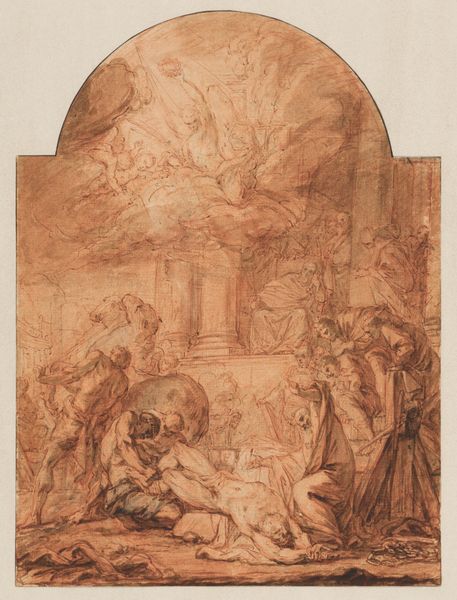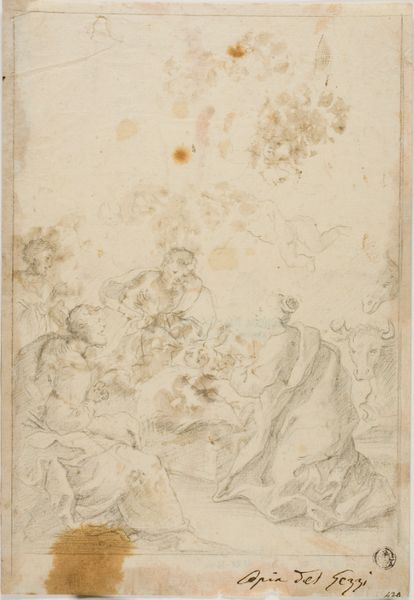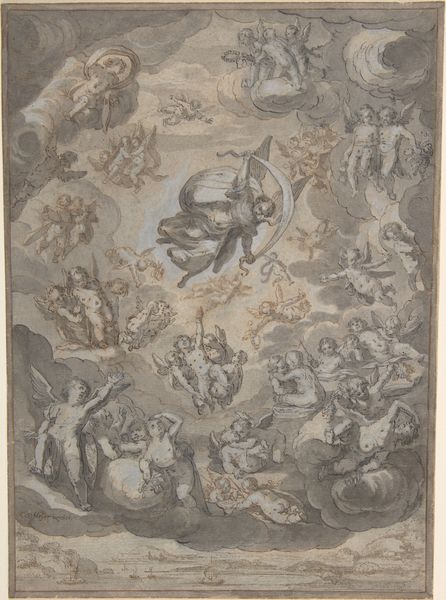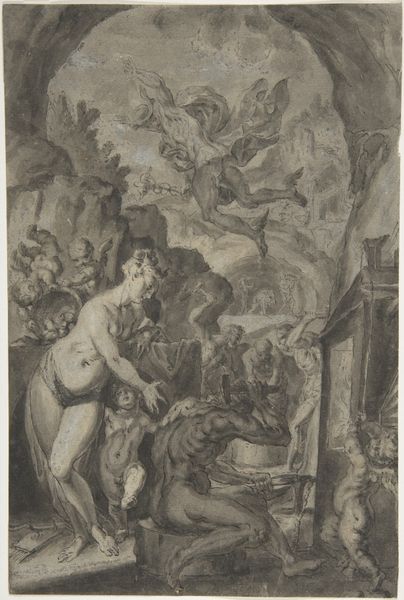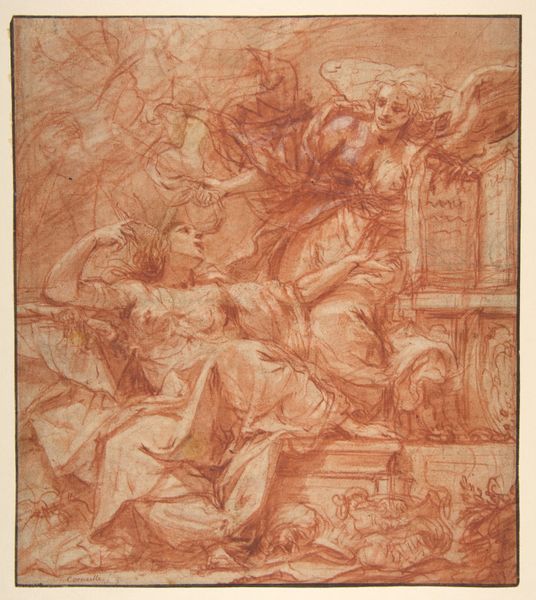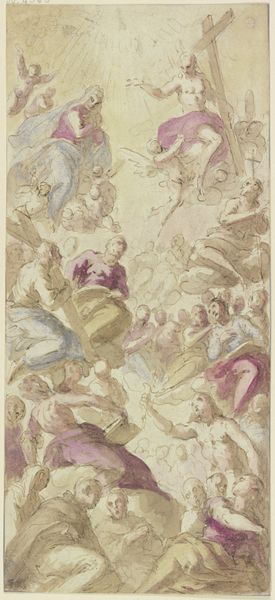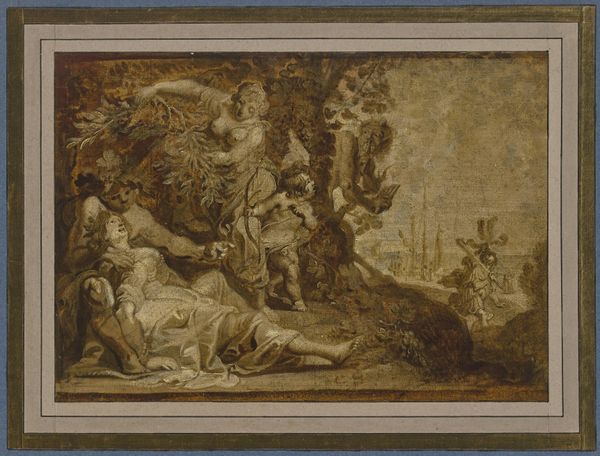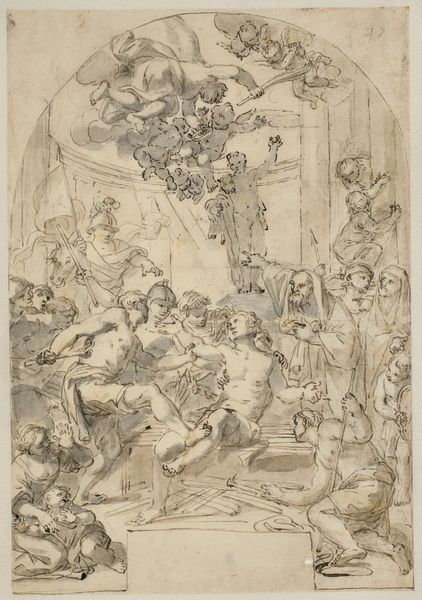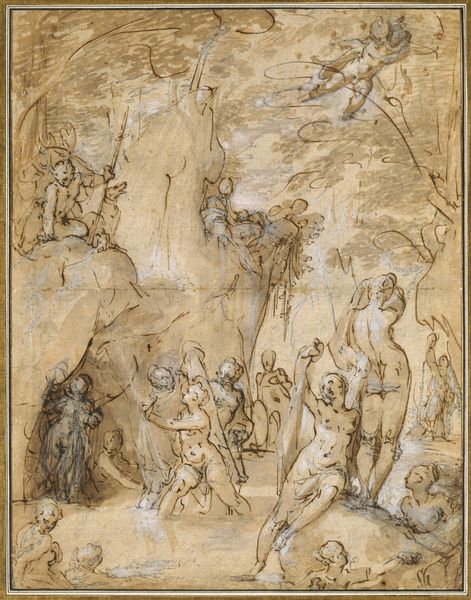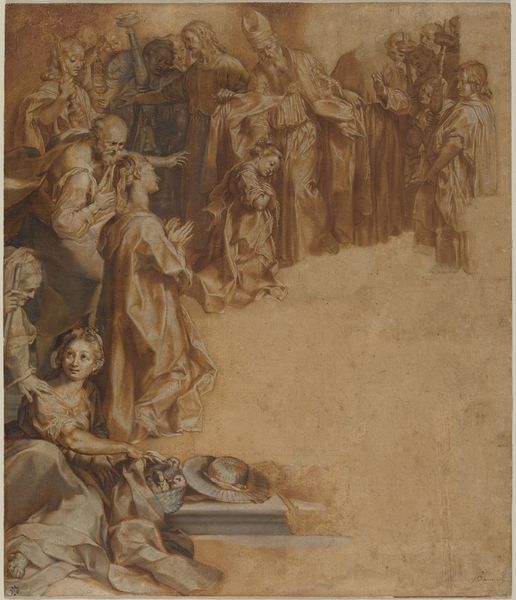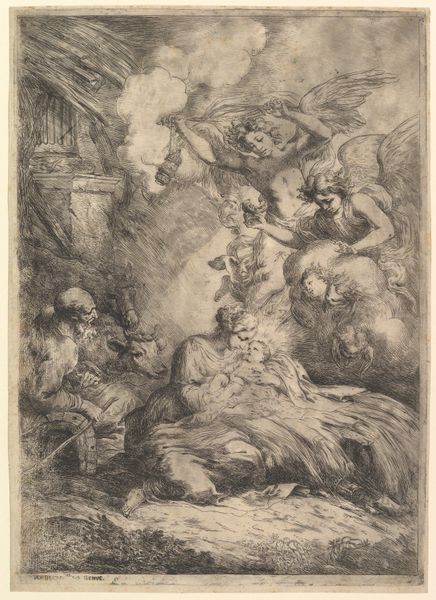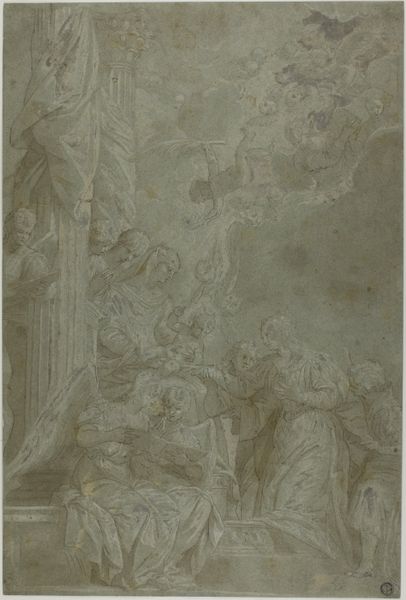
Allegory of Louis XV as Patron of the Arts with Paintings and Sculpture from the Salon of 1769 1764 - 1774
0:00
0:00
drawing, print, oil-paint, sculpture
#
portrait
#
drawing
#
allegory
# print
#
oil-paint
#
oil painting
#
sculpture
#
genre-painting
#
history-painting
#
academic-art
#
rococo
Dimensions: Sheet: 8 3/8 × 5 5/8 in. (21.3 × 14.3 cm)
Copyright: Public Domain
Editor: So, this is "Allegory of Louis XV as Patron of the Arts with Paintings and Sculpture from the Salon of 1769" by Gabriel de Saint-Aubin, made sometime between 1764 and 1774. It feels like a whirlwind of art within art, almost like a fever dream of the Salon. What's your take on it? Curator: I see it as a layered commentary on power, representation, and the role of the artist within a hierarchical society. Think about it: Louis XV, the ultimate symbol of authority, is framed not just as a ruler, but as a patron. Who benefits from that portrayal and what systems of power does that patronage reinforce? Editor: That's a great point. It's easy to just see the beauty and miss the underlying power dynamics. Curator: Exactly! Consider the Salon itself – an exclusive arena. Who got to exhibit? Whose voices were amplified? Saint-Aubin is capturing a moment of cultural production, but he's also, perhaps subtly, hinting at the inherent biases within that system. Look at how the figures almost jostle for space; it is a celebration of art, yes, but who is allowed to participate? Editor: It’s interesting how he uses the allegory to place Louis XV at the center of artistic creation. Curator: It is also propaganda! It serves to legitimise the monarch’s power, and erases the labour and socio-economic factors that make the Arts possible. It reinforces very specific gendered and raced roles in the Arts that continues to shape our experiences today. Is Saint-Aubin a simple recorder of this state, or a sharp critic? Editor: That completely changes how I see the work. It's not just a pretty scene, but a complex statement on art, power, and society. Curator: Indeed. These historical contexts give us critical tools to understand both the legacy of the art world, and our place within it today.
Comments
No comments
Be the first to comment and join the conversation on the ultimate creative platform.
